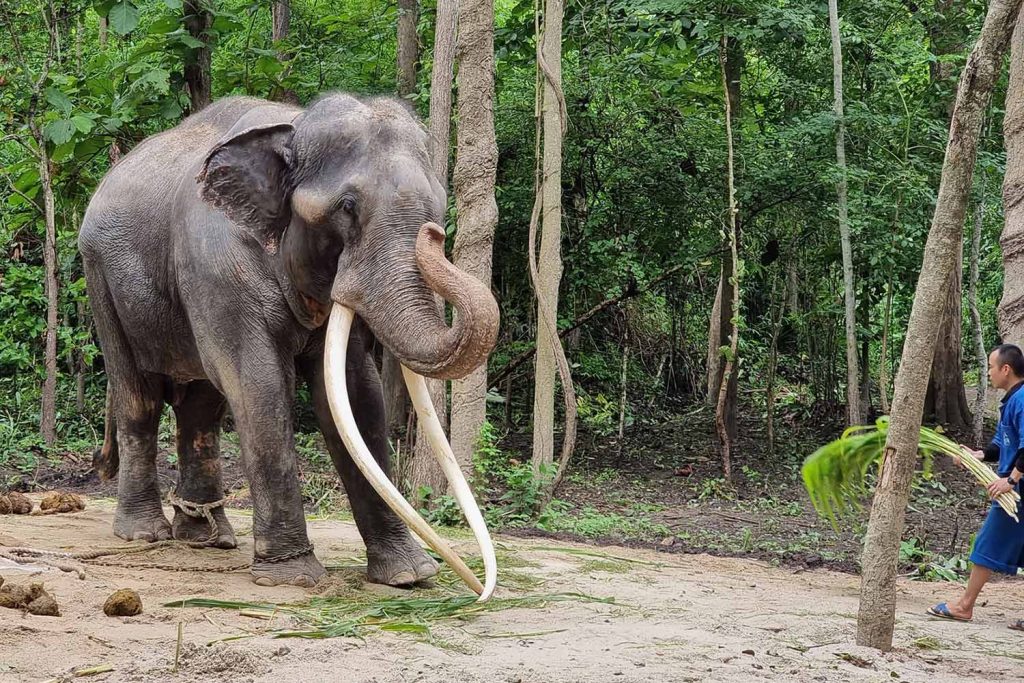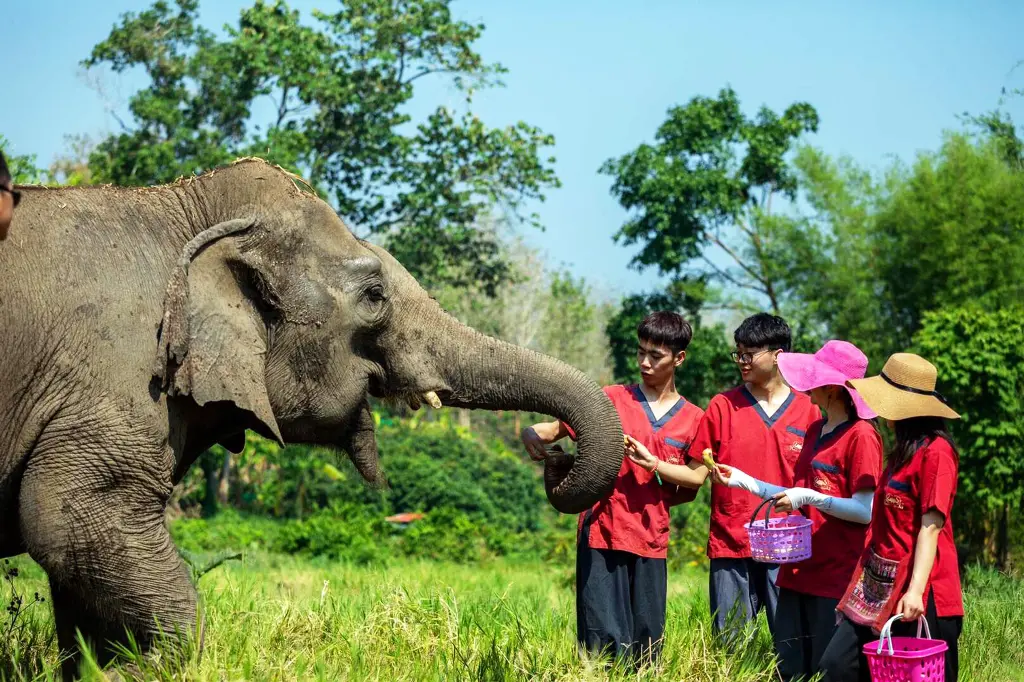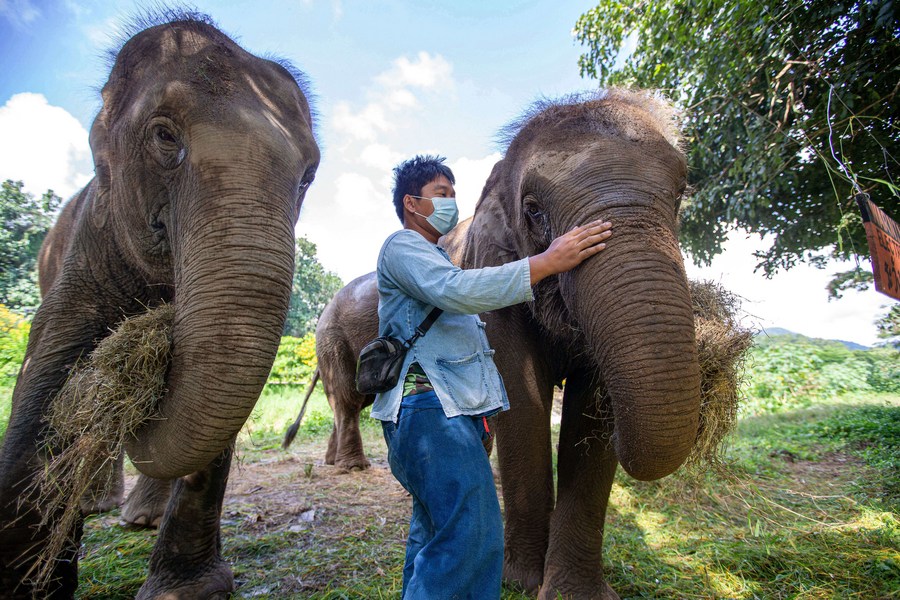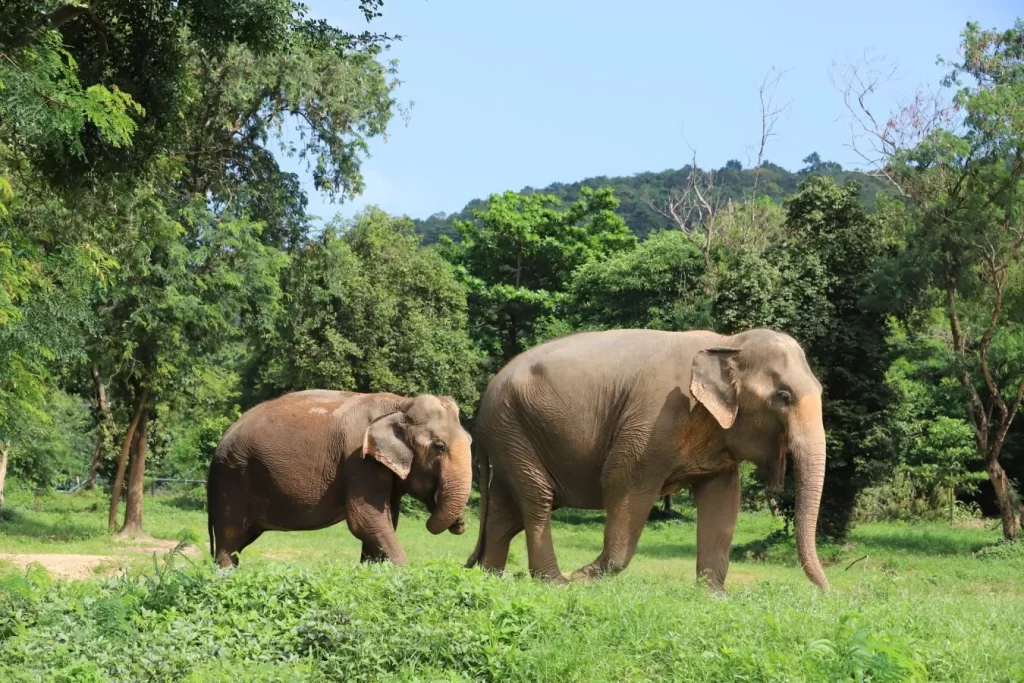News
Asian Elephant Flown Home to Thailand After Alleged Abuse in Sri Lanka
After a diplomatic spat over its alleged abuse, an Asian elephant gifted to Sri Lanka by Thailand in 2001 has returned to its birthplace. Muthu Raja, 29, landed in Thailand on a 19 million baht (£425,000; $540,000) commercial reparation trip.
Thailand sought the animal’s return amid allegations that it had been tortured while being held at a Buddhist monastery. The prime minister of Sri Lanka claimed he had publicly apologized to Thailand’s king.
The 4,000kg (8,800 pound) elephant was carried to Chiang Mai in a specially made steel cage, escorted by four Thai handlers and a zookeeper from Sri Lanka.
It will be treated with hydrotherapy for an injury to its front left leg. Elephants are considered sacred animals in both Sri Lanka and Thailand.
The Thai royal family gave three elephants, including Muthu Raja, to the Sri Lankan government in 2001 to be trained as sacred relic carriers.
Muthu Raja was given to the care of a shrine in the country’s south.

A mahout feeds Sak Surin at the Thai Elephant Conservation Centre in Lampang on Monday after arriving from Sri Lanka.
Animal rights activists claim it was forced to work with a forestry crew in the temple, and that it acquired a stiff limb as a result of a long-neglected injury.
After months of futile attempts to persuade Sri Lanka’s government to act, the Sri Lanka-based activist group Rally for Animal Rights and Environment (RARE) persuaded Thai officials to intervene last year, according to the group’s founder Panchali Panapitiya.
According to The Independent, Ms Panapitiya stated that the failure of Sri Lankan wildlife officials to act has brought “disrepute” to the country. RARE has also asked authorities to charge people responsible for the elephant’s neglect.
Sri Lankan wildlife minister Pavithra Wanniarachchi told local media that Thailand was “adamant” about returning Muthu Raja after its ambassador in Sri Lanka discovered him in poor health during a visit last year.
When Muthu Raja was evacuated from the temple in November, he was in pain and covered in abscesses, according to AFP. Some of the wounds, activists allege, were inflicted by its handler.
It was temporarily relocated to the National Zoological Garden of Sri Lanka, and most of its wounds have healed in recent months.
In June, Sri Lankan Prime Minister Dinesh Gunawardena told his parliament that he had apologised to Thai King Maha Vajiralongkorn for Muthu Raja’s alleged mistreatment and had been able to “re-establish trust between the two countries.”
The Asian Elephants hold a special place in Thai culture and history. They are considered sacred animals and have played significant roles in various aspects of Thai society.
The Asian elephant, formally known as Elephas maximus, is one of two remaining elephant species, the other being the African elephant. Here are some facts about the Asian elephant:
1. Distribution: Asian elephants are found in various Asian nations, including India, Sri Lanka, Nepal, Bangladesh, Bhutan, Myanmar, Thailand, Laos, Cambodia, Vietnam, Malaysia, and Indonesia.
2. Physical Characteristics: Asian elephants are Asia’s largest land mammals. They have a distinctive look, with greyish-brown skin, a domed skull, and smaller ears than African elephants. Male Asian elephants are considerably larger than females, reaching a shoulder height of 10 to 11.5 feet (3 to 3.5 metres) and weighing 4,500 to 12,000 pounds (2,000 to 5,500 kilogrammes).
3. Trunk and Tusks: The elephant’s long, muscular trunk is one of its most distinguishing traits. Asian elephants only have one “finger” at the tip of their trunk, but African elephants have two. Tusks, which are enlarged incisor teeth, can be found on both male and female Asian elephants. However, Asian elephants may not all have noticeable tusks, and some may be tuskless.
4. gregarious Structure and Behaviour: Asian elephants are gregarious creatures that normally live in matriarchal herds led by a dominant female known as the matriarch. These herds could be made up of related females and their kids. Male elephants typically live alone or in small bachelor groups. They have a complicated communication system that includes vocalisations, body language, and long-distance infrasonic sounds.
5. Diet: Asian elephants are herbivores that eat a variety of flora. Grass, leaves, bark, fruits, and other plant components make up their diet. An adult elephant may eat about 300-400 pounds (135-180 kilogrammes) each day.
The Asian elephant is classified as endangered by the International Union for Conservation of Nature (IUCN). The Asian elephant population has been dropping due to habitat degradation, fragmentation, and poaching. Conservation activities are currently ongoing to safeguard and enhance their habitats.
7. Cultural Importance: In many Asian countries, Asian elephants have cultural and religious significance. They’ve been used in a variety of traditional practises, including religious rites, festivals, and as logging and agriculture work animals. However, because to conservation concerns, the employment of elephants for such purposes has reduced.
It is crucial to note that this material is a basic overview, and that there may be differences and unique specifics concerning Asian elephants that vary across populations and locales.
Following concerns from environmentalists, the Thai government stopped exporting elephants overseas roughly three years ago, according to Thai environment minister Varawut Silpa-archa in June.
Bangkok’s wildlife department said it is monitoring the health of Thai elephants that have already been moved abroad.

Elderly Elephants Get a New Home in Northern Thailand
Thailand is well-known for its elephant sanctuaries, which strive to encourage ethical and responsible tourism centred on elephant welfare. These sanctuaries are vastly different from traditional elephant riding or performance attractions, which can include animal cruelty and exploitation.
Elephant sanctuaries in Thailand, on the other hand, often provide visitors with the opportunity to watch elephants in a more natural setting, participate in educational programmes, and even engage in responsible and non-intrusive interactions with the animals, such as feeding and bathing them.
The emphasis is on providing the elephants with a safe and respectful environment in which they can live freely and roam in a way similar to their natural habitat.
Please keep in mind that the situation may have altered since my last update, as the tourism sector and animal welfare standards can change quickly. I recommend checking with credible travel sources and websites, or contacting the sanctuaries directly to learn about their current practises and rules, to receive the most up-to-date and accurate information about elephant sanctuaries in Thailand. Prioritise visits to elephant sanctuaries that have a strong commitment to elephant welfare and conservation.

Thai Elephant Conservation Center is home to more than 100 Asian elephants in northern Thailand
Here are a few well-known elephant sanctuaries in Thailand:
- Elephant Nature Park (Chiang Mai): Located in the northern region of Thailand, Elephant Nature Park is one of the most popular and reputable elephant sanctuaries. They rescue and care for elephants that have been mistreated or injured. Visitors can observe and interact with elephants in a responsible manner, including feeding them, walking alongside them, and bathing them in the river.
- Boon Lott’s Elephant Sanctuary (Sukhothai): Boon Lott’s Elephant Sanctuary is situated in the Sukhothai province. They focus on providing a natural and stress-free environment for elephants. Visitors can participate in activities like preparing food for the elephants, observing their behavior, and learning about their conservation.
- Burm and Emily’s Elephant Sanctuary (Mae Chaem): Located near Chiang Mai, this sanctuary offers a unique experience where visitors can learn about and interact with elephants in their natural habitat. They prioritize the well-being of the elephants and provide a more intimate and educational experience for visitors.
- Elephant Haven (Kanchanaburi): Elephant Haven is an ethical sanctuary situated in Kanchanaburi province. It provides a home for elephants that have been rescued from the tourism and logging industries. Visitors can observe elephants as they roam freely, and learn about their behavior and conservation efforts.
When choosing an elephant sanctuary, it’s crucial to ensure they follow ethical practices, prioritize the welfare of the elephants, and refrain from activities like elephant riding or forced performances. These sanctuaries offer a responsible way to observe and support these majestic creatures while promoting their well-being and conservation.































